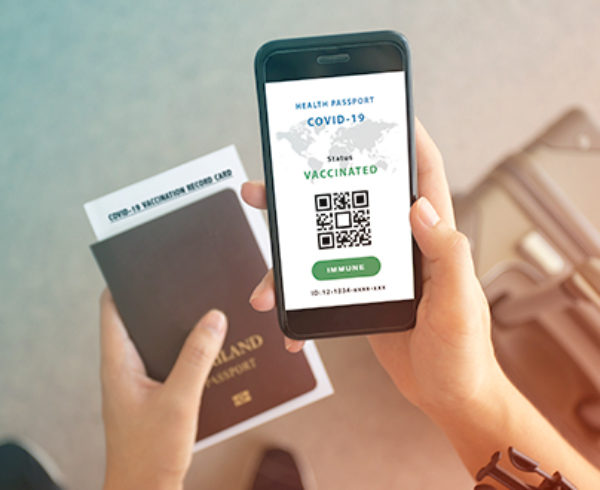The hospitality industry took a hit when COVID-19 swept around the world. Current hotel trends indicate that some segments performed better than others during the pandemic, while some hotel tiers have fully recovered in 2021. What does that mean for the future of services, amenities and negotiating rates?
Many different industries struggled when COVID-19 became a reality in early 2020. Few industries took a bigger hit than hospitality. Leisure Travelers canceled their vacations, and corporate Travelers stopped booking as businesses put in place travel bans. But, in late 2021, hotel trends show that some segments of the hospitality industry performed well — and that some hotel tiers have even exceeded pre-pandemic daily rates.
What does this mean for Travel Managers? Here’s a look at how different hotel segments performed during the worst of 2020, plus what types of pricing to expect in late 2021 and into 2022.

Extended-Stay Options Perform Well
Hotels designed for longer guest stays outperformed traditional hotels during the worst of COVID-19. There was a small segment of business Travelers who never left the road during the pandemic. Statistics indicate that this segment flocked to extended-stay hotels because they wanted more space and in-room kitchens (as many restaurants closed their doors).
Extended Stay America took advantage of this burst of business, taking the company private in a March 2021 deal worth $6 billion. Choice Hotels is also capitalizing on the renewed interest in extended-stay properties, which now represent 10% of its entire portfolio as of June 2021. WoodSpring Suites, one of Choice Hotels’ extended-stay properties, was able to maintain 86% of its occupancy in 2021’s Q2 compared to the same quarter in 2019.
The extended-stay segment’s performance has tapered as COVID-19’s impact on travel starts to dissipate. Occupancy is down 4.3% and average daily rate (ADR) is down 10.9% year-to-date in 2021 compared to 2019. That decline makes sense as more business Travelers are back on the road, and as restaurants and other services open up again.
However, it is worth mentioning that alternative accommodations like Airbnb for work are making their way into hotel programs. In a recent survey by Business Travel News, 11% of respondents indicated they intend to increase their use of extended-stay hotels in their hotel programs.
Low-Priced Hotel Options Outperform High-Priced Options
In traditional hotel tiers, lower-priced properties outperformed higher-priced options. Economy hotels’ overall occupancy is only down 2.5% year-to-date in 2021 compared to 2019. ADR is only down 0.1% in the economy tier through the end of August 2021 compared to the same timeframe in 2019.
Midscale hotels are down 6.7% in occupancy, but they have fully recovered in ADR — growing 1.2% above 2019 rates. It’s the upper midscale, upscale and upper upscale tiers that have not reached 2019 levels in either occupancy nor ADR.
Luxury Hotels Have Fully Recovered in ADR
Occupancy at luxury hotels remains extremely low. Through the end of August 2021, occupancy at these properties is down 31.2% compared to the same timeframe in 2019. But those same properties have fully recovered in ADR.
ADR across the luxury tier is 10.6% higher through the end of August 2021 compared to the same timeframe in 2019. There are positive signs at both ends of the pricing spectrum — ADR in the luxury segment and occupancy in the economy segment. Look for the tiers in between to bounce back in 2022 as the rate of COVID-19 vaccination continues to rise and corporations continue their return to business travel.

Services and Amenities, Expectations and Priorities
Expect many of the services, amenities and technologies introduced during the pandemic to stick around. For example, hotels created nearly touchless check-in experiences, including mobile check ins, digital keys, concierge video chats, plus more. Those new services aren’t going anywhere, no matter what happens with COVID-19.
What do business Travelers want from the hotel experience in a post-COVID-19 world? First and foremost, they want readily available food and beverage. Survey results show that 75% of respondents saw the lack of food and beverage options as a challenge. Adequate staffing for housekeeping services was also a concern of 66% of respondents. Only 44% of respondents saw a lack of fitness, spa, pool, valet and parking as a challenge. Only 29% were concerned about business amenities, and only 24% were concerned about health and safety.
In the coming months, food will be much more available at hotels than it was in the midst of the pandemic, though food and beverage services may look at a little different than they did before COVID-19.

How Businesses are Negotiating Rates Today
Can businesses feel confident negotiating hotel rates right now? COVID-19 is still affecting some aspects of day-to-day life, and then there are the hotel occupancy and daily rate dynamics to take into account. About 52% of businesses expect to roll over portions of their portfolios but also to “negotiate key partnerships.” A plurality of businesses (44%) will “push more agreements to dynamic rates than in the previous cycle,” while also negotiating a corporate rate as a cap.
It’s telling that there’s no consensus across the industry on how to negotiate rates right now. Different companies are taking different approaches because of the uncertainty in the market. Perhaps 2022 will bring more certainty for the future — and how businesses should negotiate with hotel vendors.
Where Should Your Team Members Stay?
At JTB Business Travel, we work each day with Travel Managers at companies large and small. Not only do we provide assistance in negotiating hotel rates and reducing overall travel spend, we offer comprehensive services as the travel management company of choice. Behind everything we do is a common-sense approach to business travel.
Contact us to learn more about how we can help you navigate the future of business travel.














Leave a Comment